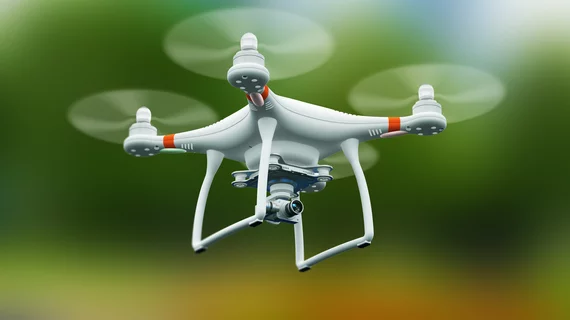Drones deliver defibrillators much quicker than ambulances
Drones can bring automated external defibrillators (AEDs) to patients who desperately need them much faster than ambulances, according to new findings presented virtually at ESC Congress 2021.
The study, which was simultaneously published in European Heart Journal, included 12 different instances when drones delivered defibrillators to patients with suspected out-of-hospital cardiac arrest.
In each case, a drone pilot would quickly contact an air traffic control tower and gain approval to deploy the device. Once in the air, the drone would be guided to the person in need and slowly lower a defibrillator to a waiting bystander. Ambulances were also sent at the exact same time, ensuring patients would receive care if the drone encountered some sort of obstacle or failed to function properly.
Overall, researchers reported, the drone was successfully delivered to the waiting bystander 92% of the time and arrived before the ambulance 64% of the time. On average, the drone arrived nearly two minutes faster than the ambulance.
“Unlike previous simulation studies, this was the first study to deploy drones with AEDs in real life emergencies,” lead author Sofia Schierbeck, MD, a specialist at Karolinska University Hospital in Sweden, said in a statement. “We have developed a system using AED-drone systems placed in remotely surveilled hangars, fully integrated with the emergency medical service, dispatch center, and aviation control. Our study shows that it is not only possible but can be quicker than an ambulance.”
As the technology continues to improve, Schierbeck added, she expects more and more patients to be helped by this drone delivery system.
“Drone delivery of AEDs could be common practice in the coming years,” she said. “It could also be expanded to other medical scenarios in the very near future, such as delivery of epinephrine to patients with anaphylactic shock or delivery of glucose to diabetic patients with low blood sugar.”
Click here for the full analysis.

